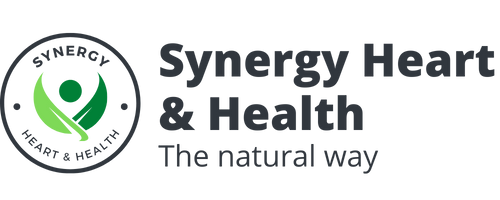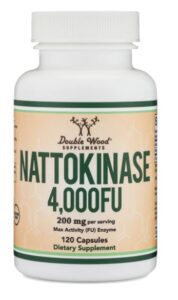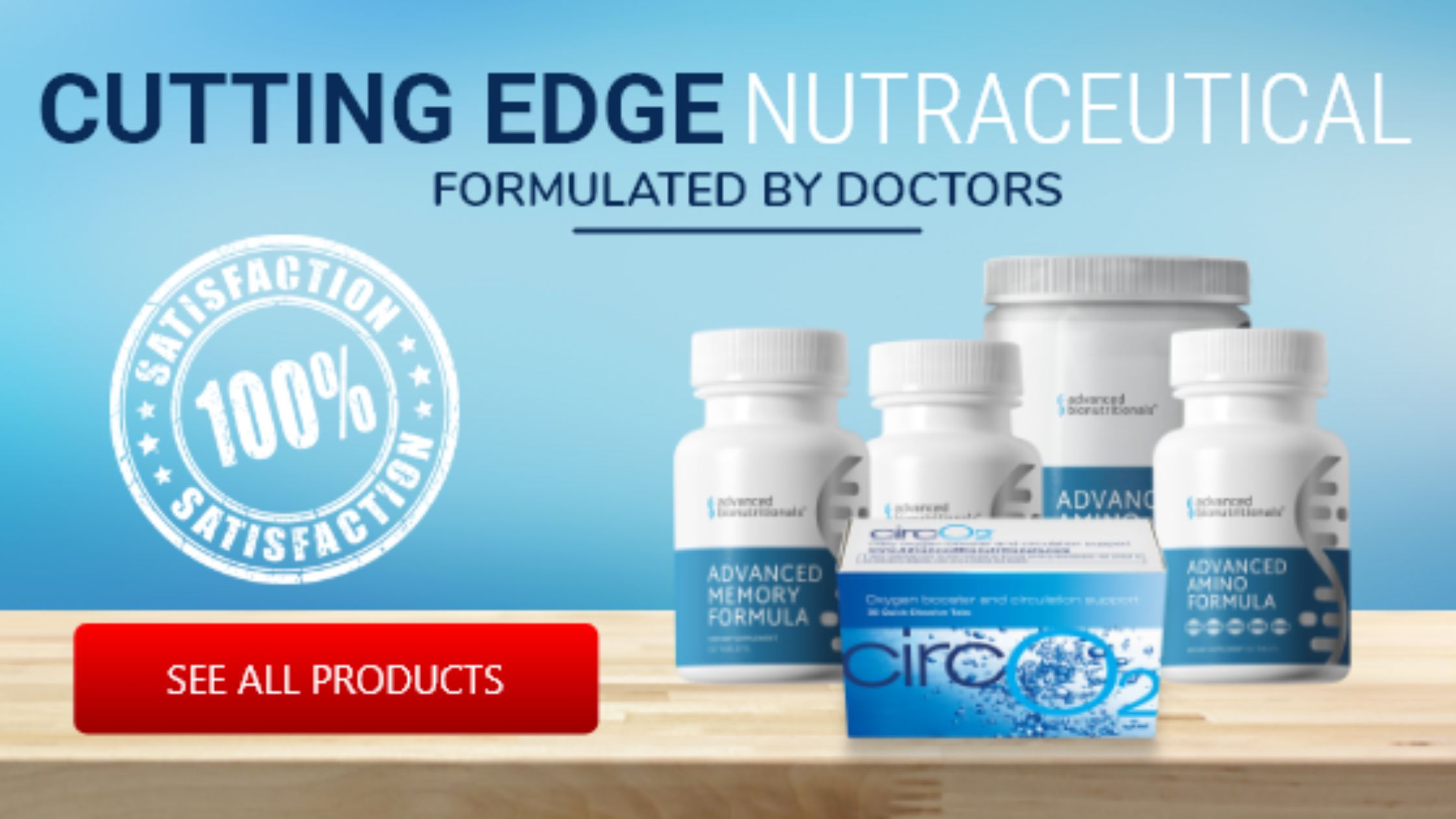What is the connection between Nattokinase and blood clots, blood clots are a major risk factor causing death in some cases, blood clots are the leading cause of death in the USA along with heart disease.
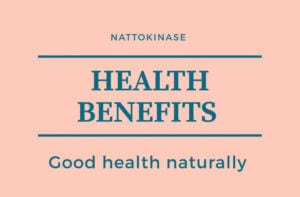
Let’s investigate what Nattokinase is, what it is good for and more importantly does Nattokinase dissolve blood clots?
Natto, is a fermented product from soybean, in Japan it has been eaten as part of their everyday diet for many thousands of years.
Nattokinase or NK is made by a bacterium Bacillus subtilis during the fermentation process of soya beans to produce Natto.
Natto a protein is an effective blood clot remover and is used in the treatment of cardiovascular diseases, natto is also being used for peripheral artery disease, poor circulation and blood clots.
Nattokinase is a natural enzyme and is safe to take.
Clinical studies on Nattokinase and blood clots
Natto has been studied extensively in China, Korea and Japan, in recent times Natto has been recognized for it’s fibrinolytic or anti-clotting capacity in the Western world.
Nattokinase has been evaluated for safety by the National Science Foundation in the USA, currently Natto is being used in a clinical study for use in atherothrombotic prevention.
Benefits of Nattokinase
Some benefits of Nattokinase include its safety for use, it is a low cost powerful natural supplement to treat heart and cardiovascular disease (5,6,7)
Human and animal trials (9,10,11) have shown that Nattokinase may support blood circulation by thinning blood and by dissolving blood clots.
During one animal trial dogs who had chemically induced thrombi in a major vein in the leg were administered 4 NK capsules, in just under 5 hours normal blood flow had returned (8)
In another rat model clinical trial thrombosis was chemically introduced the rats were treated with NK results showed that they had recovered up to 62% of their arterial blood flow.
During two studies (12,13) Nattokinase was reported to effect both inflammations induced vein thrombosis (4) and oxidative arterial thrombosis (12,13) after ferric chloride was given to the injured artery the result in platelet adhesion and oxidative thrombosis.
Nattokinase was administered resulting in inhibiting thrombus formation and platelet aggregation.
Nattokinase acts in much the same way as aspirin (blood thinner) a major benefit of Nattokinase it doesn’t trigger bleeding or produce gastric ulcers.
A healthy blood supply means that we feel well, however arterial plaque build up has a detrimental effect on our bodies.
When the supply of blood is reduced it can lead to all sorts of health conditions such as heart disease, poor circulation, peripheral artery disease, blood clots or stroke.
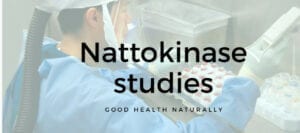
Nattokinase is a natural enzyme, one of its health benefits is its ability to remove arterial plaque build, Nattokinase and blood clots go hand in hand because it dissolves them and that improves the flow of blood.
Cardiovascular disease risks
Factor V11 and V111 have the potential to set off a blood coagulation cascade leading to a bigger risk of cardiovascular disease.
During a two-month trial of three distinct groups of people some were healthy, some had cardiovascular risk factors, and some were having dialysis, all were given 2 capsules of Nattokinase daily.
After the eight-week trial the three groups showed a similar but significant reduction in factor V11, factor V111 and fibrogen.
No side effects were reported during the eight-week trial, also there were no changes in body weight, heart rate, or uric acid levels. (15)
Nattokinase benefits blood clots
Nattokinase has been proven to break down thrombus and fibrin, in a study (10) of twelve healthy young men each were administered one capsule of Nattokinase (2,000 IU) after two hours an increase in the concentration of antithrombin was noticed in their blood.
In addition, the activity of factor V111 declined significantly after a four-hour period following Nattokinase ingestion.
The results of this study indicate many different pathways are involved in Nattokinase anti coagulation and fibrinolysis activity.
There is without doubt a big connection between Nattokinase and blood clots.
Nattokinase Absorption
Nattokinase and Serrapeptase are not like other proteins in the sense they are much better at resisting high acid levels or high gastric fluid levels in the stomach, both are easily absorbed in the lower sections of the digestive tract.
Nattokinase has a high temperature resistance 50 degrees centigrade and ph. to 10, meaning it remains in one piece when it enters the gastrointestinal tract. (6)
Nattokinase uses
Nattokinase is widely available commercially in China, Japan, Korea, Europe, United States and Canada, it is sold as a food supplement and Nattokinase is used to treat blood clots, improve blood circulation, thin blood and assist with cardiovascular disease.
Apart from the connection between Nattokinase and blood clots one study (4) showed that Nattokinase may improve other health conditions such as high blood pressure (4), Alzheimer’s disease, atherosclerosis (19) and stroke. (17)
References
1. Sumi H., Hamada H., Tsushima H., Mihara H., Muraki H.. [PubMed]
2. Yatagai C., Maruyama M., Kawahara T., Sumi H.. [PubMed]
3. Fujita M., Hong K., Ito Y., Misawa S., Takeuchi N., Kariya K., Nishimuro S.. [PubMed]
4. Fujita M., Ohnishi K., Takaoka S., Ogasawara K., Fukuyama R., Nakamuta H.. [PubMed]
5. Nagata C., Wada K., Tamura T., Konishi K., Goto Y., Koda S., Kawachi T., Tsuji M., Nakamura K. [PubMed]
6. Dabbagh F., Negahdaripour M., Berenjian A., Behfar A., Mohammadi F., Zamani M., Irajie C., Ghasemi Y. [PubMed]
7. Huang Y., Ding S., Liu M., Gao C., Yang J., Zhang X., Ding B. [PubMed]
8. Sumi H., Hamada H., Nakanishi K., Hiratani H. [PubMed]
9. Jensen G.S., Lenninger M., Ero M.P., Benson K.F.. [PubMed]
10. Kurosawa Y., Nirengi S., Homma T., Esaki K., Ohta M., Clark J.F., Hamaoka T. [PubMed]
11. Lampe B.J., English J.C. [PubMed]
12. Suzuki Y., Kondo K., Matsumoto Y., Zhao B.-Q., Otsuguro K., Maeda T., Tsukamoto Y., Urano T., Umemura K.. [PubMed]
13. Jang J.-Y., Kim T.-S., Cai J., Kim J., Kim Y., Shin K., Kim K.-S., Park S.K., Lee S.-P., Choi E.-K., et al.. [PubMed]
14. Xu J., Du M., Yang X., Chen Q., Chen H., Lin D.H.. [PubMed]
15. Hsia C.-H., Shen M.-C., Lin J.-S., Wen Y.-K., Hwang K.-L., Cham T.-M., Yang N.-C. [PubMed]
16. Ero M.P., Ng C.M., Mihailovski T., Harvey N.R., Lewis B.H. [PubMed]
17. Chang Y.-Y., Liu J.-S., Lai S.-L., Wu H.-S., Lan M.-Y. [PubMed]
18. Medical Physiology Department, National Research Centre, Dokki, Cairo, Egypt. [PubMed]
19. Natural and Synthetic Drug Research Centre, Medicinal Chemistry, University of Liège, Belgium. Jean-Michel.Dogne@ulg.ac.be [PubMed]
